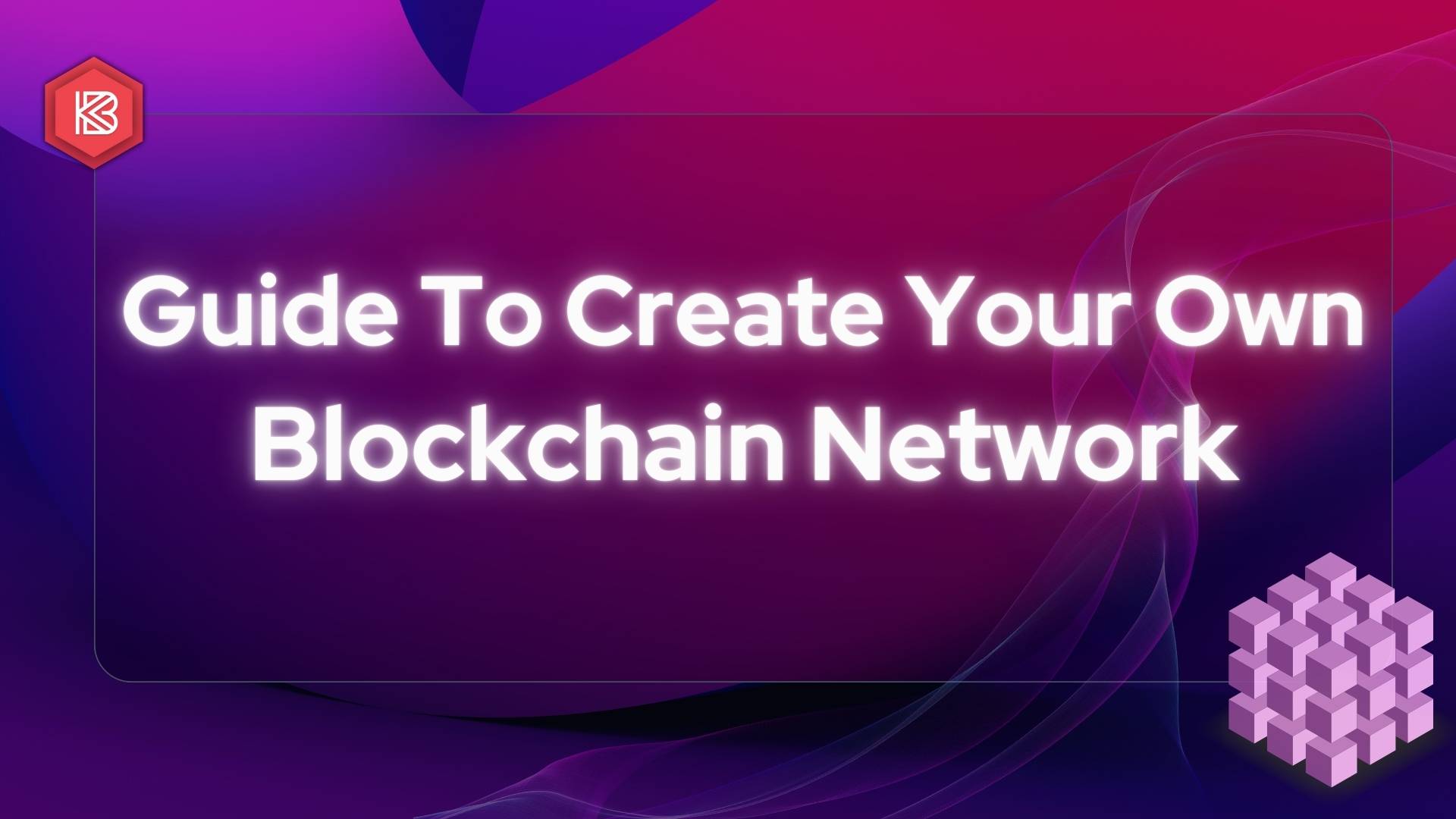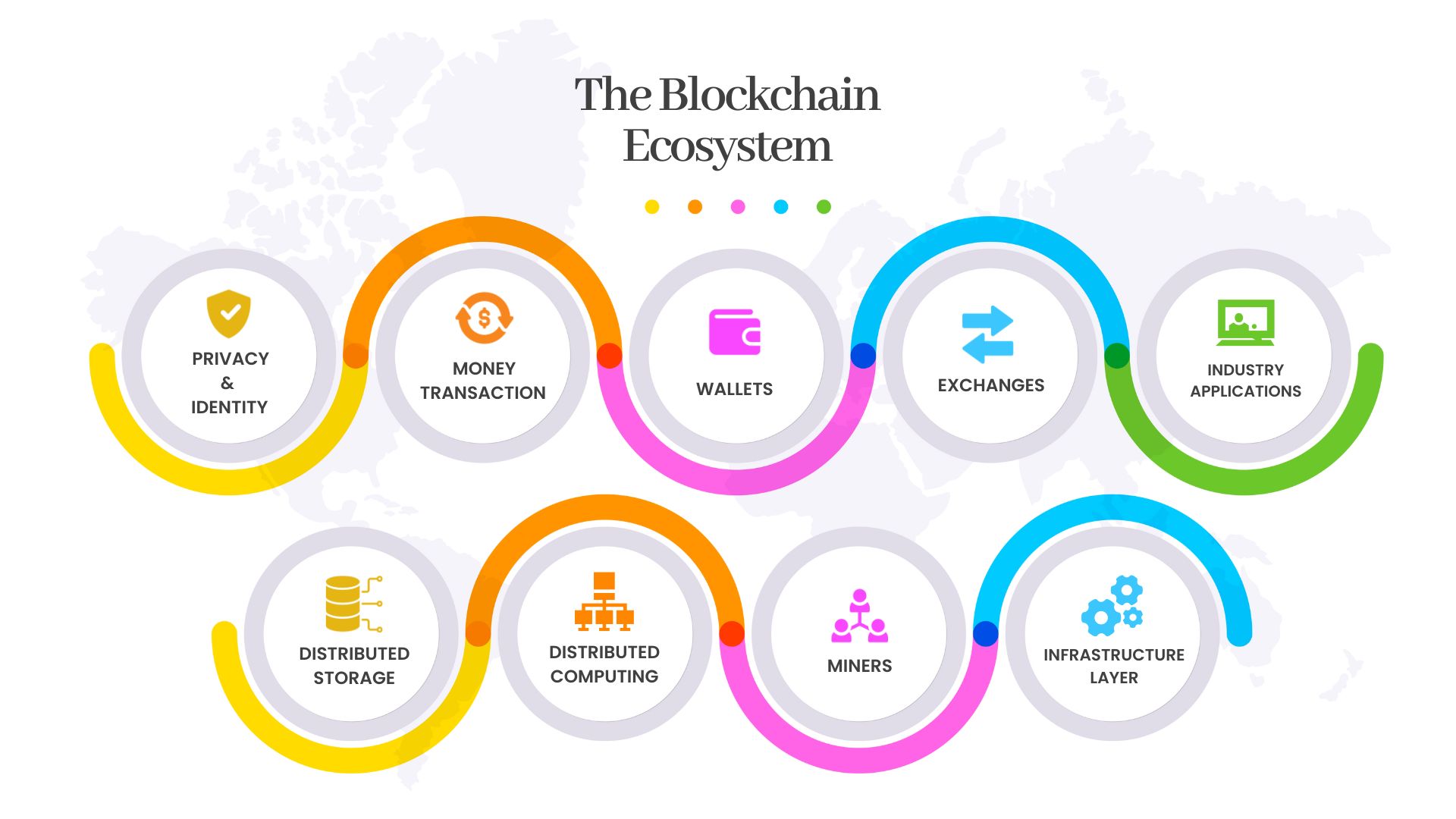Guide To Create Your Own Blockchain Network

If you’re intrigued by the potential of blockchain and want to Create Your Own Blockchain From Scratch, you’ve come to the right place. In this guide, we will walk you through the fundamental steps to create your own blockchain from scratch, and we’ll introduce Kryptobees, a trusted blockchain development company that can assist you throughout the process.
What is Own Blockchain Network?
An “own blockchain network” refers to a complete and self-contained environment built around a specific blockchain network. It encompasses not only the blockchain itself but also the various components and entities that interact within that network. An own blockchain network is designed to provide a comprehensive solution for specific use cases, enabling seamless and secure interactions between participants.

Own blockchain ecosystems can be customized to cater to specific industries, such as supply chain management, healthcare, finance, or logistics. They can facilitate secure and transparent data sharing, streamline processes, reduce costs, and increase efficiency. These ecosystems are often designed to meet the unique requirements of the organization or consortium involved.
Types of own Blockchain Network to build
There are four main types of blockchain networks: public, private, consortium, and hybrid.
Public blockchain:
Public blockchains are open to everyone and are typically used for cryptocurrencies and decentralized finance (DeFi) applications. They are secure and transparent, but they can be slow and expensive to use.
Private Blockchain:
A single organization or a consortium of organizations owns and oversees private blockchains, ensuring centralized management and control. They are more efficient and scalable than public blockchains, but they are less secure and transparent.
Consortium blockchain:
Consortium blockchains are owned and managed by a group of organizations that have a common interest. They are more secure and transparent than private blockchains, but they are less efficient and scalable.
Hybrid blockchain:
Hybrid blockchains combine elements of public, private, and consortium blockchains. They are the most secure and transparent type of blockchain, but they can be complex and expensive to set up and maintain.
How to create your own Blockchain network from scratch ?
Step 1: Define Your Objectives and Use Case
Before diving into the development process, clearly define your objectives and use case for the blockchain network. Identify the specific problem you aim to solve or the industry you want to target. This step will help you determine the requirements and design choices throughout the development process. Consider factors such as the type of transactions you want to support, the level of decentralization required, and the target user base.
Step 2: Choose the Blockchain Type
Next, decide on the type of blockchain you want to build: public, private, or consortium. Public blockchains like Bitcoin and Ethereum are open to anyone, while private blockchains restrict access to a select group. Consortium blockchains are a hybrid, allowing multiple entities to participate in the network. Choose the type that best fits your goals. Consider concerns such as scalability, privacy, and network control.
Step 3: Design the Blockchain Architecture
Designing the blockchain architecture involves determining the key components, such as the consensus mechanism, data structure, and network protocol. Select a consensus mechanism suitable for your use case, such as Proof of Work (PoW) or Proof of Stake (PoS). Choose a data structure, such as a linked list or Merkle tree, to store the transactions. Define the network protocol for communication between nodes. Consider factors such as security, scalability, and efficiency in your design choices.
Step 4: Set Up the Development Environment
To start developing your blockchain ecosystem, set up your development environment. Choose a programming language that suits your requirements, such as Solidity for Ethereum-based blockchains or Golang for building from scratch. Install the necessary development tools, such as a code editor, compiler, and blockchain framework. Familiarize yourself with the documentation and resources available for your chosen technology stack. Consider factors such as developer community support, available libraries, and tooling options.
Step 5: Implement Core Blockchain Functionality
Begin implementing the core functionality of your blockchain ecosystem, such as transaction validation, block creation, and network communication. Ensure that your blockchain is secure and resistant to attacks by following best practices in cryptography and consensus algorithms. Test your implementation thoroughly to identify and resolve any bugs or vulnerabilities. Consider factors such as performance optimization, fault tolerance, and data consistency in your implementation.
Step 6: Develop Smart Contracts
If your blockchain ecosystem requires smart contract functionality, consider developing and deploying smart contracts using languages like Solidity. Smart contracts enable the automation of business logic and facilitate self-executing transactions, enhancing the capabilities of your blockchain ecosystem.
Step 7: Test and Deploy
Conduct comprehensive testing to ensure the reliability and functionality of your blockchain ecosystem. Perform unit tests, integration tests, and stress tests to validate the system’s performance. Once you’re confident in the stability and security of your blockchain, deploy it to the desired environment, whether it’s a local network or a public network.
Benefits of creating own blockchain network
Decentralization and Transparency : All transactions on a blockchain are public and can be verified by anyone.
Enhanced Security : Blockchain technology is secure and tamper-proof.
Efficiency: Blockchain technology can streamline and automate processes, which can lead to cost savings and increased productivity.
Traceability and Audibility: Blockchain technology can help to improve traceability by providing a way to track the movement of goods and services throughout the supply chain
Increased Trust and Collaboration: Blockchain technology can help to enhance collaboration by providing a way for businesses to share data and information in a secure and transparent way.
Scalability and Interoperability: Blockchain technology can be scaled to meet the needs of a growing number of users.
Empowering Individuals: Blockchain ecosystems empower individuals by giving them control over their own data and digital assets
Kryptobees: Your Trusted Blockchain Development Partner
While building your own blockchain network can be a complex endeavor, you don’t have to do it alone. Kryptobees, a leading blockchain development company, specializes in assisting businesses like yours in creating customized blockchain solutions. With their expertise and experience, they can guide you through the entire development process, from conceptualization to deployment. Kryptobees offers expertise in various blockchain technologies, customization to meet your specific needs, robust security measures, and ongoing support and maintenance.
Why choose Kryptobees for own blockchain network development?
Expertise: Kryptobees has a team of experienced blockchain developers who possess in-depth knowledge of various blockchain technologies and frameworks.
Customization: we understand that every business has unique requirements. Kryptobees can tailor the blockchain ecosystem to meet your specific needs and use cases.
Security: Kryptobees prioritizes the security of your blockchain ecosystem, implementing robust measures to protect against vulnerabilities and potential threats.
Ongoing Support: Their support doesn’t end with the development phase. Kryptobees offers ongoing maintenance and updates to ensure the smooth operation of your blockchain ecosystem.
Conclusion
Building your own blockchain network from scratch can be a rewarding and transformative endeavor. By following the simple guide outlined in this blog and partnering with Kryptobees, you can navigate the complexities of blockchain development and bring your vision to life. Remember to define your objectives, choose the appropriate blockchain type, design the architecture, set up the development environment, implement core functionalities, and test rigorously before deployment.
Building a blockchain ecosystem requires careful planning and attention to detail, but with dedication and the right resources, you can create a secure and transparent platform to revolutionize your industry. Embrace the power of blockchain and revolutionize your industry with a secure and transparent ecosystem built to your exact specifications.
 Discuss Project!
Discuss Project!